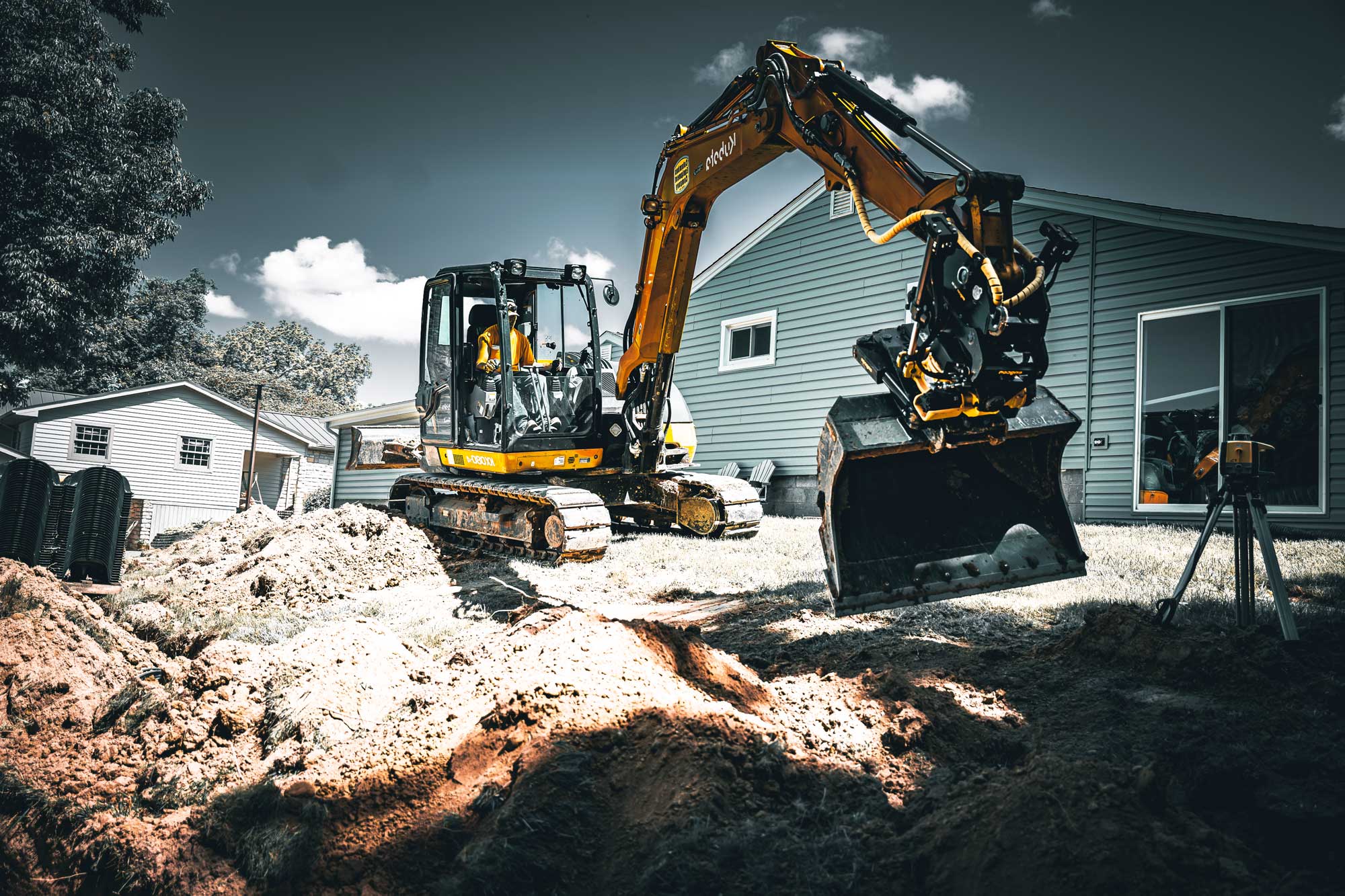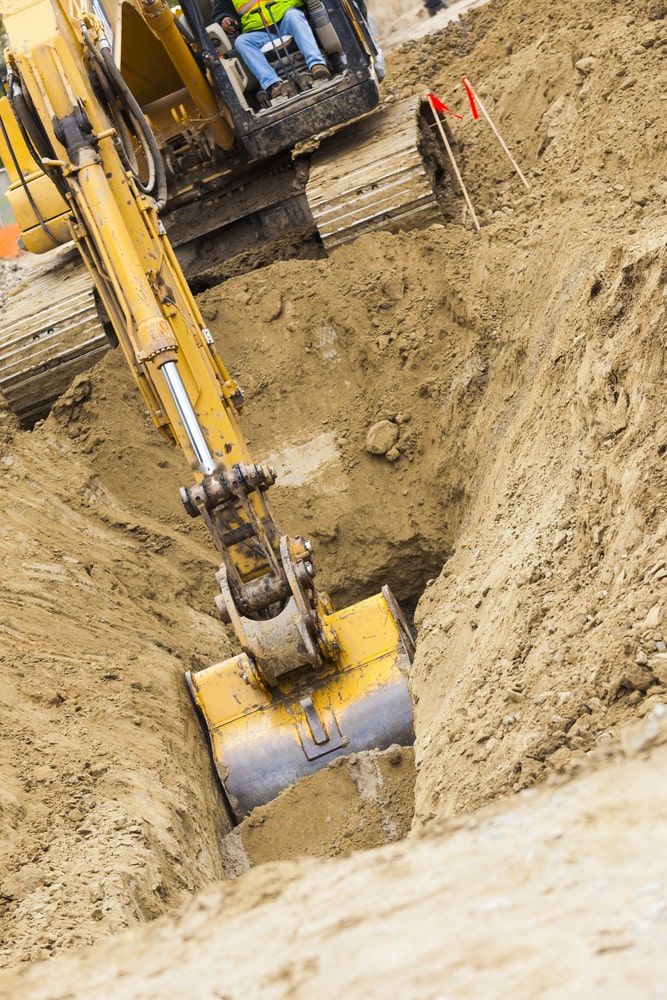Lancaster Trenching - Professional Trenching Solutions in Lancaster, Ohio
Lancaster Trenching - Professional Trenching Solutions in Lancaster, Ohio
Blog Article
Introducing the Art of Excavation: Pro Tips for Safe and Productive Digging
As dirt is turned and earth is moved, the complexities of excavation expose themselves, requiring an eager understanding of tools, soil structure, safety and security protocols, and environmental considerations. The expertise required to browse these aspects properly can mean the distinction in between a successful excavation job and a potential disaster.
Relevance of Proper Devices
To ensure the safety and performance of any excavation job, making use of the appropriate equipment is vital. Excavation tasks differ in extent and complexity, ranging from little property landscape design work to large building and construction endeavors.
These functional equipments come in numerous sizes to suit various job needs. Miniature excavators are excellent for smaller tasks, while bigger excavators take on much more comprehensive projects efficiently.
Apart from excavators, various other crucial equipment includes dump trenchers, trucks, and bulldozers. Dispose vehicles are vital for getting rid of and moving excavated products, while trenchers are used for digging deep and slim trenches. Bulldozers master tasks that require pushing big amounts of soil or debris. By spending in the ideal equipment, excavation projects can be finished safely, promptly, and with precision.
Recognizing Dirt Structure
A detailed understanding of dirt make-up is fundamental for implementing excavation tasks with precision and safety. Recognizing the various sorts of dirt is critical as it directly influences excavation methods, devices option, and total job efficiency. Dirt composition normally consists of 4 main components: sand, silt, clay, and raw material. Each part has distinct homes that influence how dirt reacts to excavation processes.
Silt particles are smaller than sand but larger than clay, supplying modest water drainage and communication. Organic issue, such as decomposing plant product, influences dirt fertility and stability.
Prior to starting excavation, conducting dirt examinations to determine its make-up and attributes is crucial. This info helps in choosing the appropriate tools, applying safety and security steps, and developing excavation strategies tailored to the particular soil problems - lancaster trenching. By comprehending dirt make-up, excavation specialists can improve project outcomes while guaranteeing security and adherence to finest techniques
Precaution and Protocols
Comprehending dirt structure is the foundation whereupon safety measures and methods for excavation projects are developed, guaranteeing the well-being of employees and the success of the endeavor. There are several essential actions that must be applied to reduce dangers and protect against crashes. when it comes to safety during excavation.
Firstly, before any excavating begins, a detailed evaluation of the website need to be carried out to determine any kind of prospective risks such as below ground utilities, unpredictable dirt problems, or neighboring structures that could pose a danger. It is vital to have a proficient person oversee the excavation process to guarantee that all safety procedures are followed purely.
Moreover, all workers associated with the excavation must be effectively educated in secure digging practices and the correct operation of tools. Individual protective devices (PPE) such as difficult hats, high exposure clothes, handwear covers, and safety boots need to be worn in any way times to reduce the risk of injuries. septic ohio. Normal safety meetings and tool kit talks must also be performed to maintain all workers notified concerning potential risks and strengthen safe job practices. By adhering to these safety measures and protocols, excavation tasks can be completed efficiently and without event.
Efficient Excavation Planning
When beginning on an excavation job, thorough preparation is essential to make sure efficiency, security, and successful results. Reliable excavation planning involves several essential actions that are crucial for the smooth implementation of the project.
When the site assessment is total, the next step is to develop a clear timeline and schedule for the excavation tasks. This consists of determining the series of tasks, equipment i loved this requirements, and workforce allotment. Appropriate organizing assists prevent delays and makes certain that the project remains on track.

Moreover, interaction among all staff member is vital throughout the preparation phase. Clear regulations, regular updates, and effective sychronisation are vital for an effective excavation job. By spending time and initiative in precise preparation, excavation teams can significantly improve productivity, reduce dangers, and attain effective end results.

Handling Ecological Considerations
With enhancing emphasis on environmental sustainability in building and construction techniques, handling environmental factors to consider has actually become an important element of excavation jobs. Excavation tasks have the prospective to impact the surrounding environment through dirt erosion, sediment runoff, environment interruption, and contamination of water sources. To minimize these dangers, it is necessary check it out to execute ideal practices that prioritize environmental defense.

Furthermore, appropriate waste management is vital to stop soil and water contamination. Executing procedures for the disposal of dangerous products, recycling of waste products, and minimizing using damaging chemicals can dramatically lower the ecological impact of excavation jobs. By integrating these techniques right into excavation preparation and execution, building firms can make sure that their jobs are not just safe and productive yet additionally eco accountable.
Conclusion
Finally, grasping the art of excavation calls for a complete understanding of correct equipment, soil structure, precaution, and reliable planning. By adhering to these standards and taking into consideration environmental variables, excavations can be conducted safely and effectively. It is important to focus on security and productivity in every digging task to make sure effective outcomes.
As dirt is transformed and planet is moved, the details of excavation expose themselves, demanding a keen more understanding of tools, dirt structure, security methods, and environmental considerations.To guarantee the security and efficiency of any type of excavation job, making use of the appropriate tools is paramount.A detailed grasp of dirt composition is essential for performing excavation tasks with precision and safety. Recognizing the different types of dirt is vital as it straight influences excavation methods, equipment selection, and general task efficiency. By comprehending soil make-up, excavation specialists can boost project end results while ensuring safety and security and adherence to ideal methods.
Report this page